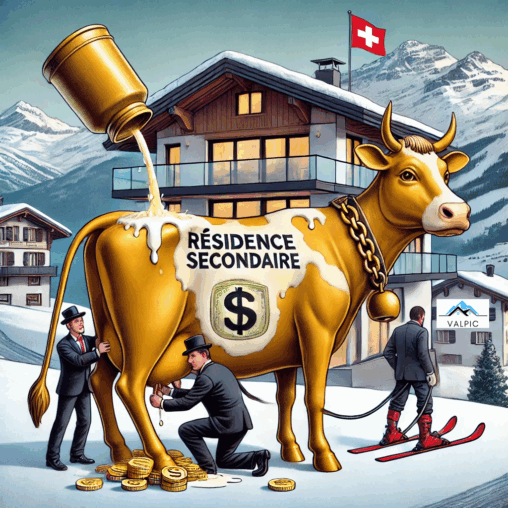- Replacement of the rental value tax
- Voting on September 28, 2025
- An analysis by Valpic —
The project favors a population that does not own second homes (R2), and has little debt, and is therefore probably older. It disadvantages young, indebted couples who own an R2, as well as those with high maintenance or renovation expenses that would become non-deductible, with damaging consequences for the professionals affected. Given that the number of R2 dwellings is almost equal to the number of principal residence dwellings (R1) in Valais, a canton which is an exception in Switzerland (which overall has only 12% R2), the project clearly puts Valais at a disadvantage outside the cases cited.
However, the devil is in the detail, as we would need to know the amounts of the “replacement” taxes on R2, which in Valais would have the advantage of being spread over a larger number of vehicles.
In principle, the current system of taxing fictitious rental values is convoluted, to say the least. Even our neighbor, the world’s tax champion, doesn’t have this absurd practice, while allowing tax deductibility of interest on the principal loan and certain works.
The current problem in Switzerland seems to be that no political tendency supporting the proposed changes imagines for a single moment that it will NOT replace this tax revenue, and remains in a logic of replacement taxation, which will inevitably create losers and winners.
What’s more, if we assume that the overall tax base is maintained, the same tax pressure that affected the 36% of homeowners in Switzerland will be transferred to the 12% of secondary residents (i.e., a threefold increase). In Valais, where 54% of the population are homeowners (compared with 46% renters), the tax burden would be shifted to the 50% of secondary residents (i.e., doubled). Assuming an average tax on R2s alone, those most penalized would be those with the highest loans, whose interest would no longer be deductible, and those who had to undertake major renovation work.
Another risk lies in the basis of assessment used by the tax authorities. The current tax on rental value is based on cadastral values that are heavily discounted, often by less than half the market value. A future property tax on second homes could well be based on updated values, which would amplify the phenomenon, particularly in popular tourist resorts.
So, will citizens want to trade in a bad system they know about for a situation whose impact on their “real estate life” they will find hard to measure? The answer will be given at the ballot box on September 28, 2025.
Certainly a vote not to be missed.
VALPIC analyses
August 2025

